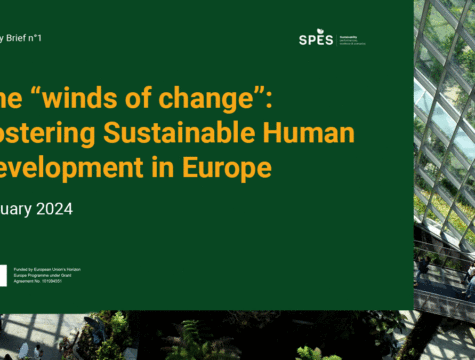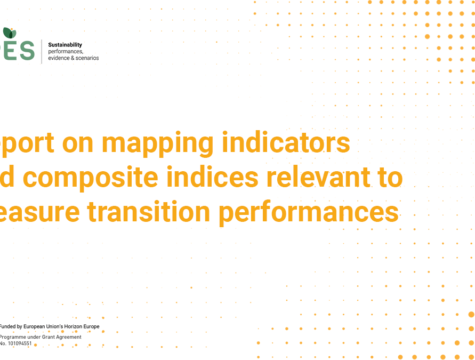Project SPES framework offers a Sustainable Human Development (SHD) vision to sustainability transition. It links the 5 Ps of the 2030 Agenda for Sustainable Development – People, Prosperity, Planet, Partnership and Peace – with the 5 pillars of SHD – productivity, equity, environmental sustainability, participation & empowerment, human security emphasizing the role of human collective agency through interactions among societal actors driving the sustainability transition. At the same time, it highlights the role of inner transformation and reflexivity as transformative elements allowing to trigger the transition towards SHD by shaping different means of implementation.
The vision underlying the SPES project and framework points out that the lives of human beings – as agents, beneficiaries and adjudicators of progress – and the sustainability of our societies in terms of Planet, People, Prosperity, Peace and Partnership should be the ultimate concern for any government intervention at all levels. It follows that prosperity and productivity should no longer to be confused with the narrow and exclusive goal of economic growth, nor that economic growth would automatically deliver benefits for all.
Therefore, policy interventions should focus on those factors that can lead to improve productivity and value-added enhancing processes while reducing inequalities and addressing the environmental tipping points, embracing, at the same time, a new concept of human security based on protection, empowerment and solidarity.
This implies also the transition from a logic of “shareholder capitalism” towards a logic “stakeholder capitalism”, moving to a global economy that works for progress, people and the planet but including also peace and partnership.
The 2030 Agenda as overarching policy framework at global level
The 5 Ps of the 2030 Agenda are the starting point of SPES framework, as they represent the areas of critical importance for humanity and the planet through the pursuit of goals and targets that are integrated and indivisible, global in nature and universally applicable.
The 5 Ps refer to People, Prosperity, Planet, Partnership, and Peace, each representing a critical area that needs to be considered to achieve the Sustainable Development Goals (SDGs). In our interpretation, Peace is a vital standpoint, with a much broader meaning than simply the absence of conflicts: rather, it refers to the harmonious coexistence between humans as well as between the ecosystem and human beings. Hence, it is placed at the core of the representation, while the other four areas, despite being obviously fundamental, represent the cardinal points of SD.
Contribution to the Sustainable Human Development paradigm
The first element of novelty of SPES framework is to link these 4 critical areas of action with the pillars of human development, re-interpreting their original formulation to adjust them to current societal challenges:
- Productivity: The efficient use of economic, human and natural resources for the provision of goods and services, expanding human capabilities and increasing the standards of living for all.
- Equity: Ensuring equitable access to economic, political, social and cultural opportunities for all.
- Environmental sustainability: The practice of responsibly managing and preserving natural resources and ecosystems, ensuring a balance between current and future people well-being.
- Participation & empowerment: Enabling individuals and communities to be active agents of their own future, by ensuring a level playing field for the societal engagement of citizens and stakeholders.
The second element of novelty is that we added the new fifth pillar of human security to take into account for the role of human social relations, stability, and peace.
Having this additional pillar is fundamental for two main reasons, among others: first, because many of the nowadays human insecurity threats are a by-product of the human choices in the pursuit of unsustainable and unbalanced growth, resulting in social imbalances and environmental degradation; second, because it allows to identify a primary one-to-one linkage between the 5 Ps and the five pillars, notwithstanding the integrated and indivisible nature of our framework, thus fully embracing a SHD vision.
The quintuple Helix model
The participation of constellations of actors from different societal sectors is necessary for a systemic change in the society towards sustainability. Therefore, the SPES framework relies on the Quintuple Helix model as a cooperative governance mechanism capable of involving government, business, academia, and the civil society in knowledge creation and innovation processes, all of them embedded in the natural environment.
This highlights the dynamic role of human actors for all pillars and in all areas of action, along with the overarching role of the natural environment, potentially driving together the transition towards SHD.
The project framework is extensively described in the Working Paper 2.1 The “winds of change”: the SPES framework on sustainable human development, that you can read here.




